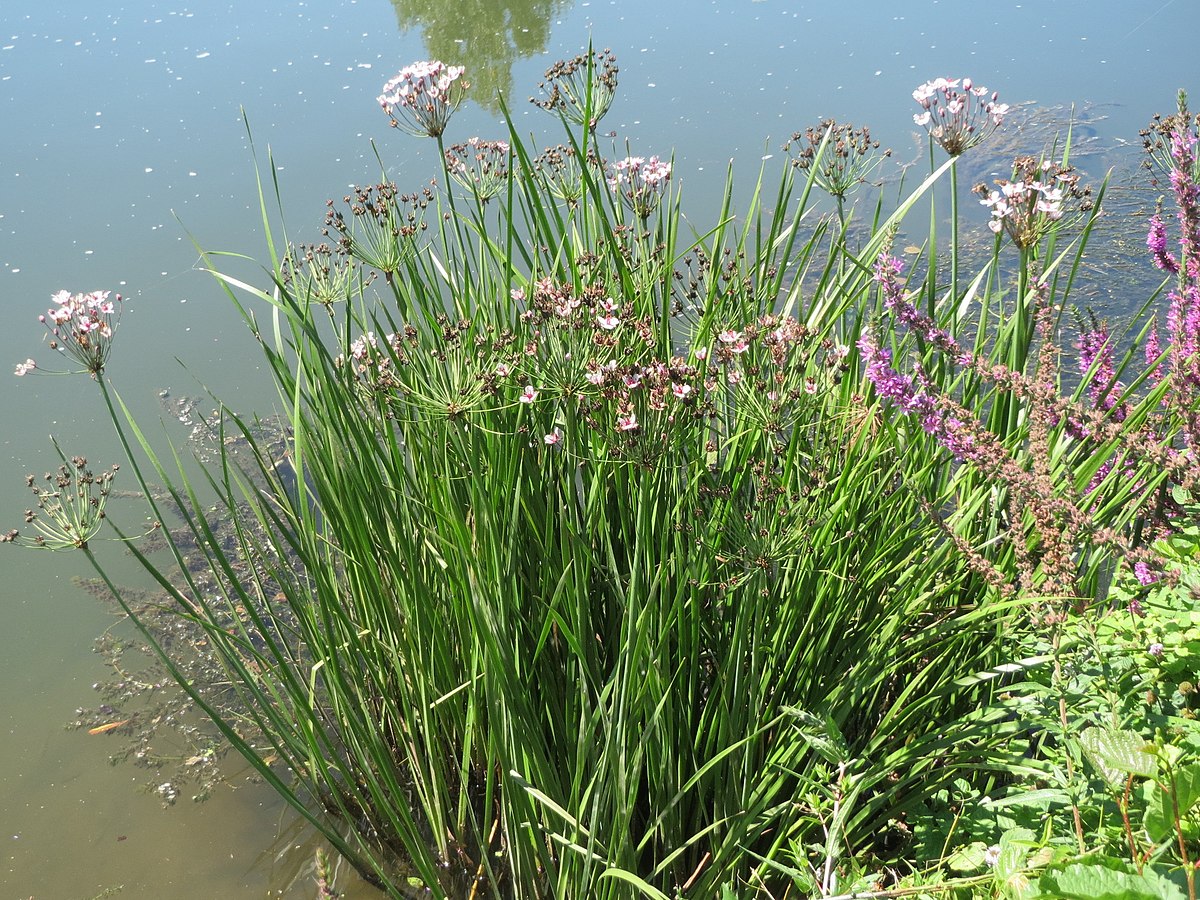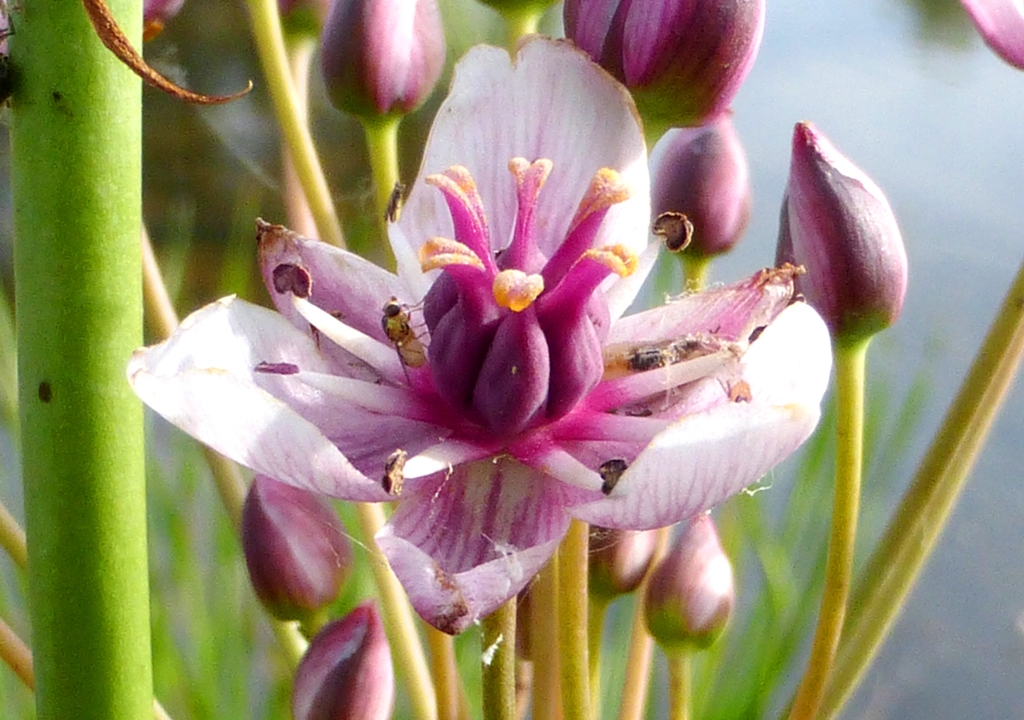Flowering Rush

Flowering Rush
(Butomus umbellatus )
Priority: - Prevent / EDRR
Tags: Aquatic | EDRR
Identification and Reproduction
Identification:
- Flowering rush is an aquatic perennial that resembles native grasses.
- It is most notable during its flowering stage; July through September. Plants will only produce flowers when situated in shallow water or on dryer sites.
- Flowers grow in an umbrella shaped cluster. Each individual flower segment is made up of 3 green sepals and 3 white to pink petals.
- Green stems, appearing like bulrushes and triangular near base.
Reproduction:
- It spreads through seeds as well as by underground stems and rhizomatous roots.
- The root fragments may break off and float in waterways to re-establish elsewhere.
- Animals may use pieces of the plant for their habitats, furthering its spread.
- Fragments are also easily broken and transported from boat users.
Habitat & Ecology
- This plant thrives in freshwater wetlands; commonly found along edges of rivers and lakes.
- It can also grow suspended in water up to 3-6 m deep.
- Flowering rush has already invaded the Great Lakes region and has caused significant impacts.
- Waterbodies that flucutate in water levels are vulnerable to flowering rush infestations. When water levels are low and soil is exposed this allows flowering rush to spread further.
Impacts
Social:
- Dense patches may block recreational users.
- Infestations can also obstruct irrigation ditches.
Ecological:
- As they invade, they will crowd out native plants, disrupting the natural food chain.
- Alters water quality and will interfere with native fish and wildlife habitat.
Management
Prevention is a high priority for this plant.
- Always clean, drain, and dry aquatic equipment like boats or canoes before transferring from one body of water to another.
- Never grow or intentionally transport this plant, or dispose of aquarium plants in waterways or down the drain.
For alternative planting options to flowering rush, check out the ISCBC's Grow Me Instead guide.
Resources
Download the Government of BC Invasive Species Alert for Flowering Rush here.
Header photo (Ar Herrmann).




